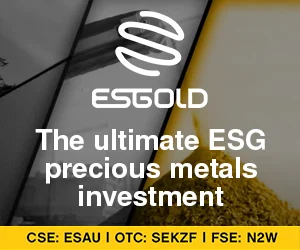Introduction
Karo Mining Holdings, a subsidiary of South Africa’s Tharisa Plc, is making significant strides in the mining sector, particularly in Zimbabwe’s mineral-rich Great Dyke belt. The company is currently seeking shareholder approval to extend the maturity of its bond listed on the Victoria Falls Stock Exchange (VFEX) by three years, pushing the maturity date to December 2028. This strategic move aims to align financing with project development timelines, ensuring the successful execution of the Karo Platinum Group Metals (PGMs) project.
The Karo PGMs Project: A Brief Overview
The Karo PGMs project is one of the few large-scale platinum developments globally, situated in Zimbabwe, the world’s third-largest producer of PGMs after South Africa and Russia. The project holds immense potential, not only for Karo Mining but also for the broader Zimbabwean economy, which is heavily reliant on its mineral resources.
Construction of the project commenced in December 2022, backed by a substantial equity commitment of US$160 million and proceeds from the VFEX-listed bond. However, the pace of development faced challenges in 2024 due to fluctuating commodity prices, highlighting the volatility of the mining sector.
Extraordinary General Meeting: Key Resolutions
Karo Mining is set to convene an Extraordinary General Meeting (EGM) on November 7, where shareholders will deliberate on five crucial resolutions. These include:
Extension of Bond Tenor: The proposal seeks to extend the maturity date of the VFEX-listed bond by three years, allowing the company to better align its financing with ongoing project developments.
Interest Rate Adjustment: Karo Mining plans to increase the bond’s interest rate from 9.5% to 11% per annum, effective December 1, 2025. This adjustment reflects current market dynamics and aims to make the bond more attractive to investors.
Removal of Early Redemption Interest Obligation: The company proposes to eliminate the obligation to pay interest upon early redemption of the bond, providing more flexibility in managing its financial commitments.
Introduction of a Guarantee Fee: This resolution aims to enhance the financial structure of the bond, ensuring that Karo Mining can meet its obligations more effectively.
Relevant Authorisations: Shareholders will also be asked to approve various authorisations necessary for implementing these changes.
Project Milestones and Future Prospects
As of July 2025, Karo Mining has invested approximately US$178 million into the project, achieving significant milestones that de-risk project execution. Key accomplishments include:
Completion of Design and Engineering Works: This foundational step is crucial for ensuring that the project adheres to industry standards and best practices.
Civil Construction Progress: With 80% of civil construction completed, the project is on track for timely execution.
Procurement of Equipment: The company has achieved 90% procurement of long-lead mechanical and electrical equipment, essential for the operational phase of the mine.
Securing Bulk Water and Power Supply: These resources are vital for the mine’s operations, ensuring sustainability and efficiency.
Commissioning of a PGM Pilot Plant: This facility will support data collection for the commercial concentrator, further enhancing the project’s viability.
Looking ahead, the updated mine development plan entails a peak expenditure of US$546 million, with the expectation of producing approximately 220,000 ounces of PGMs annually during the first phase of the project. This phase is projected to last for ten years, after which underground mining will continue for an estimated lifespan of over 50 years.
Conclusion
Karo Mining Holdings is positioning itself as a key player in the global PGM market through strategic financial maneuvers and robust project development. The upcoming EGM will be pivotal in determining the future trajectory of the Karo PGMs project, which holds promise not only for the company but also for Zimbabwe’s economic landscape. As the mining sector continues to evolve, Karo Mining’s proactive approach may well set a precedent for future developments in the region.




